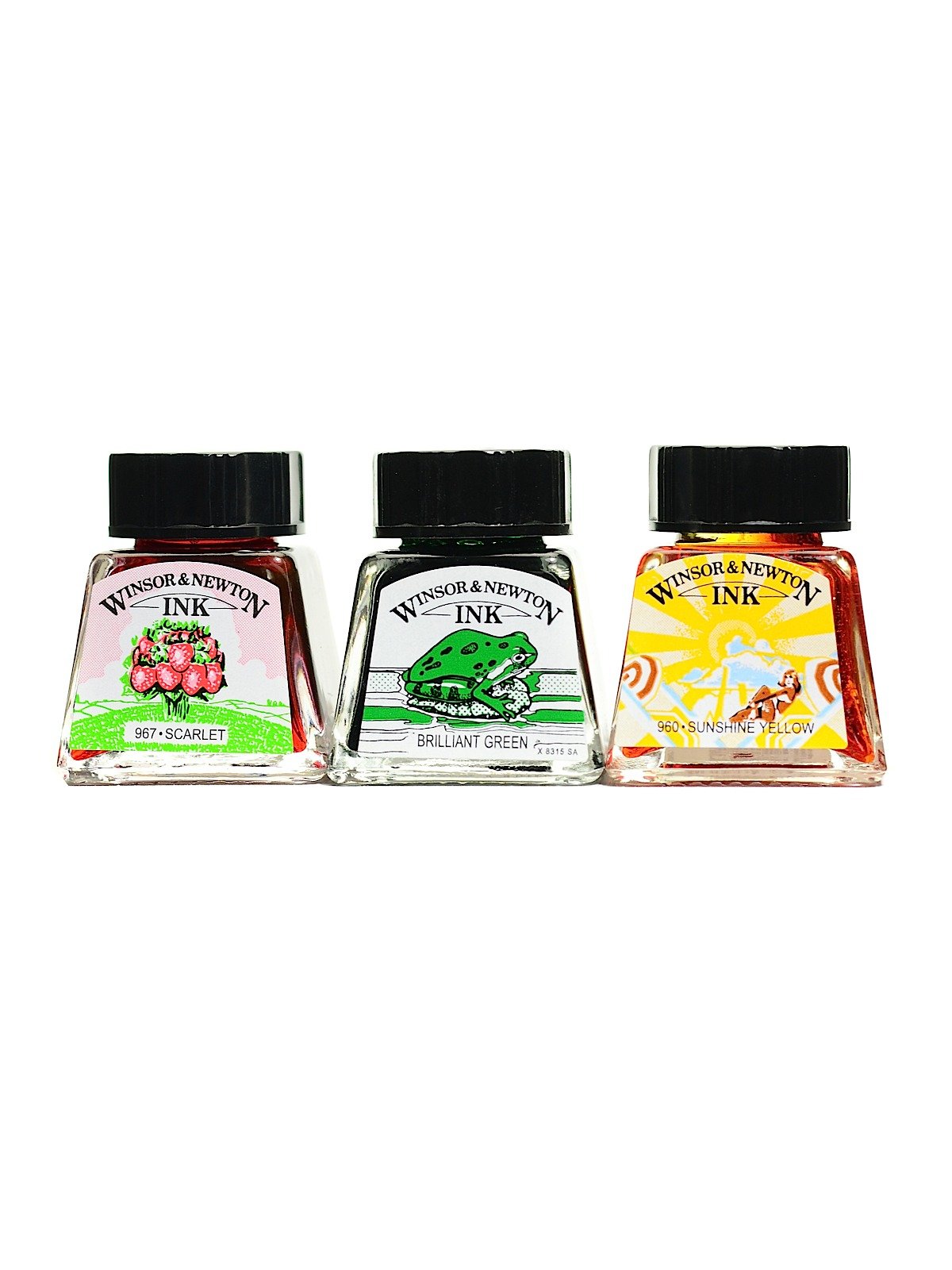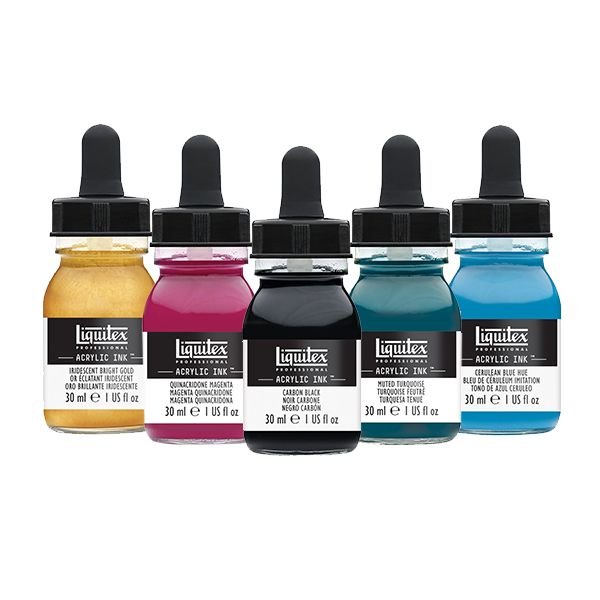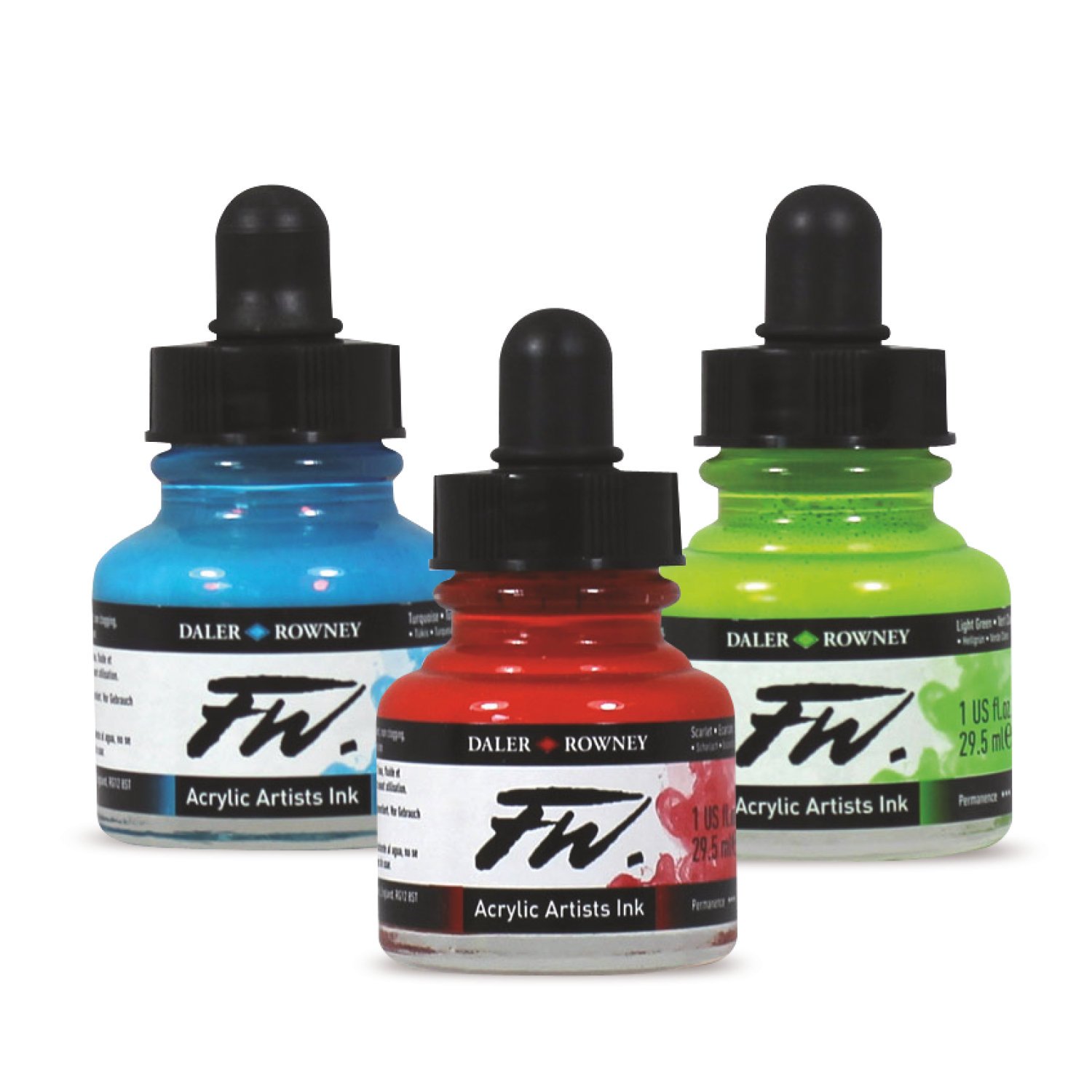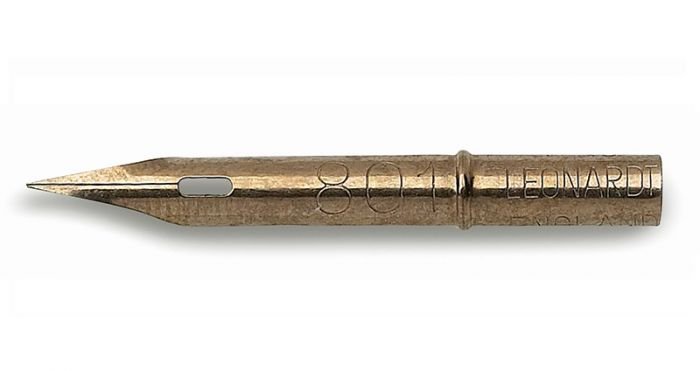INK + NIB REVIEW! INKING - PART 3
If you enjoy art challenges and trying out new art supplies, then this guide might be of use if you’re looking for traditional ink and nibs for drawing!
These are the materials I've used personally and that are easier to find in Australia. It can be really tricky to source certain materials here, and ordering from overseas can be super expensive and sometimes disappointing.
I have 7 years experience working in Art Supply retail shops, so I've tried quite a few things over the years and have a lot of technical knowledge to share with you all!
INK
WINSOR AND NEWTON
Winsor and Newton Ink is probably the best known brand in Australia; most recognisable for the cute graphics on the packaging. The black indian ink is waterproof and lightfast (only the spider! NOT the dragon), but be careful with the coloured inks as they will fade with exposure to UV light.
Personally, I'm not a fan of these inks because the colours fade, they are expensive, and the ink dries up rather quickly once opened (even if stored correctly). Additionally, they don't provide an eye-dropper in the packaging for dispensing product.
LIQUITEX ACRYLIC INK
Liquitex Acrylic Inks have some amazing colours! I am particularly fond of the vivid lime green, cerulean blue, and quinacridone magenta. The ink itself is well pigmented, which you'll notice by the settlement of colour at the bottom of the jar when left on the shelf. All you need to do is give them a shake and they're good to go! The pricing is good value for quality and I like the fact they come with an eyedropper to dispense the product. The consistency of Liquitex inks is a little thicker than other, since it’s acrylic based. I think you’ll need an airbrush medium if you wish them with an atomiser or compressor airbrush. There is a good range of metallics in this brand, including a copper and bronze colour!
SCHMINCKE AEROCOLOR INK
Schmincke Aerocolor Ink is a very high quality brand from Germany and their Aerocolour inks are very nice! All colours in the range have a high lightfastness rating and the packaging has an eyedropper. They are on the pricier end and I find the inks dry with a slightly reflective sheen. I prefer more matte inks, so my bias sways me towards Liquitex and FW. These are well formulated for air-brushing and flow very well.
ART SPECTRUM INK
Art Spectrum Liquid Spectrum Inks are Art Spectrum's higher end option for inks with a concentrated formula. However, I find that they do not have as much pigment as Liquitex, Schmincke, or Daler Rowney inks when used and often appear more tansparent, needing many layers to build a strong colour. The bottle design is a little different, instead of a dropper there is a small valve-like opening you can drip the ink out of, which I find frustrating to use. The colours are lightfast, but the price vs payoff isn't as good as other brands. Even though the bottles are larger, I think you'll end up using more product to get good intensity. If you like to build up light washes in your work, these might suit you nicely!
DALER ROWNEY FW ARTIST INK
Daler Rowney FW Artist Inks have a good range of artist colours and are well priced. They also have one of the largest pearlescent/metallic colour ranges with some really beautiful options. They also provide fluoro colours, although fluoro colours will fade quickly with exposure to UV light. The formula is good for application with an air-brush and has a satin finish when dry.
There are so many inks out there, and I can only speak from my personal experience testing them when working in the art supply stores. I am by no means an expert in painting with ink. It's definitely a medium I need to practice more!
CALLIGRAPHY NIBS
I'm only going to talk about nibs I've used, there are so many available, too many to cover here!
G PEN NIB
G Pen Nibs are a large drawing nib and a versatile option when drawing. The nib is very elastic so you can draw both superfine and thick lines with the same tool (it all depends on your drawing pressure). Because they are very elastic, these nibs can take a while to get used to. There are a few different Japanese brands that make them (Nikko, Tachikawa, and Zebra). You can buy a sample set from Manga Arts here.
MAPPING PEN NIB
Mapping Pen Nibs were traditionally used for (you guessed it) mapping! They are great when you want really fine linework that is uniform. These nibs usually have a small cylinder-like body, so require a thinner nib holder.
ITALLIC NIB
Saji/Spoon Nibs are a more rigid choice that work similarly to the G nib. The lines will need more pressure to get variation so may be a good option if you draw with a heavy hand. The line variation will be more subtle than the G nib.
SPOON NIB
Itallic nibs have a flat broad end and are used for traditional lettering. They will give you a broad or narrower stroke depending on the angle you hold the nib. I don't have much experience with these, as I'm left handed and traditional calligraphy is a nightmare for me (smudging everywhere)!
For further reading and examples I found this blog on Jetpens: https://www.jetpens.com/blog/the-best-nibs-for-drawing-manga/pt/893
WHITE PENS + INK
Made a mistake or smudged ink where it shouldn’t be? These are the tools I've used to correct my inking mistakes.
POSCA PAINT MARKER
Posca Paint Markers 3mm are a good option if you want to correct a small area of black ink. I used these in my Greek Goddess Inktober series when I accidentally inked an area I shouldn't have. They are a bright white so don't work super well on watercolour paper since you can clearly see a difference between the marker ink and the off-white of the paper.
UNI-BALL SIGNO
Uni-ball Signo 1mm are a gel pen found in most stationary stores. They work okay in a pinch, but the posca definitely has better coverage. They will need some layering to cover up black, but work well for highlights on watercolour art.
DELETER COMIC INK WHITE
Deleter Comic Ink White is a highly opaque white ink designed to correct inking mistakes for comic artists. From memory this stuff has a really strong (unpleasant) smell, so I'd recommend using this in a well ventilated area. It's best applied with a brush, and I've read that it can crack a little when you draw back over it (especially if inking with a nib).
SCALPEL
A scalpel blade is a good option if you have a small area to remove. Lightly scrape the surface of the paper to scratch away the ink you want to remove. This takes patience and a delicate touch so it's definitely not for everyone. Results will depend on the paper you use (I've done this on smooth watercolour paper and bristol board with success). You can also use sandpaper to achieve a similar result.













